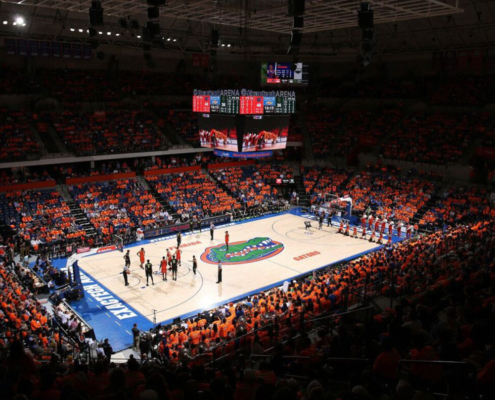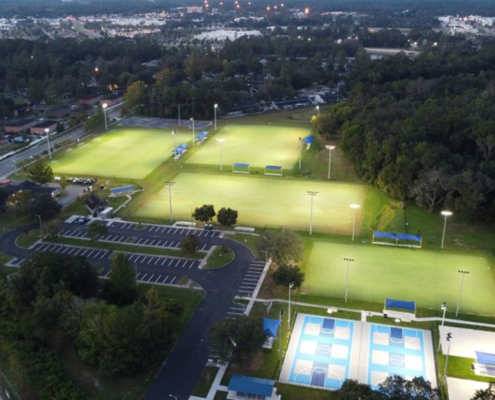 https://ngusportslighting.com/wp-content/uploads/2022/05/Homepage-Banner-2-Florida-Gators.jpg
1250
2000
AbstraktMarketing
/wp-content/uploads/2022/08/NGU-Full-Logo.png
AbstraktMarketing2024-06-18 14:33:252025-12-13 14:26:20University LED Arena Light Fixtures Guide: Types, Cost & Funding
https://ngusportslighting.com/wp-content/uploads/2022/05/Homepage-Banner-2-Florida-Gators.jpg
1250
2000
AbstraktMarketing
/wp-content/uploads/2022/08/NGU-Full-Logo.png
AbstraktMarketing2024-06-18 14:33:252025-12-13 14:26:20University LED Arena Light Fixtures Guide: Types, Cost & FundingHow to Maintain Sports Field Stadium Lights
The growth and advancement of technology have transformed various aspects of our lives, including sports entertainment. One area that has witnessed significant improvements over the years is stadium lighting. From the earliest use of floodlights for sports events to the modern-day energy-efficient LED lights, stadium lighting has considerably evolved and played an instrumental role in sports development.
A Brief History and the Impact of Stadium Lights
The use of stadium lights can be traced back to the early 20th century when sports events started to take place after sunset. The first stadium to be illuminated by light was Bramall Lane in Sheffield, England, in 1878. However, the lights used back then were relatively primitive compared to today’s advanced LED stadium lights.
The Early Start of Stadium Lights
Initially, sports field lights were primarily incandescent or fluorescent. These lights had a high wattage but emitted a low brightness level compared to LED sports lights. They also featured a less efficient light design that was later improved with the advent of HID (High-Intensity Discharge) lamps, such as metal halide lamps and sodium-vapor lamps.
Evolving Technology: From Traditional to LED
It wasn’t until the late 20th century that the transition from traditional to LED stadium lighting began. LED stadium lights emerged as a superior alternative due to their energy efficiency, longer lifespan, and improvement in light levels. The development of LED floodlights was a remarkable stride in the sports lighting industry.
Key Features of Stadium Lights
Luminosity and Brightness
The key feature of any sports light is its luminosity and brightness. A well-designed LED stadium light can significantly outperform a 1000-watt metal halide lamp. Also, they guarantee bright, natural light, immersing the whole sports field in clear visibility that enhances player performance and viewer experience.
Heat Dissipation and Energy Efficiency
Gone are the days when powerful lights meant high energy consumption and heat generation. Modern LED stadium lights are designed to be exceptionally energy efficient, promising substantial savings in electricity bills. They efficiently convert electricity into light and radiate less heat, reducing the risk of damage due to overheating.
Lifespan and Durability
The durability of a stadium light is directly related to its lifespan. High-quality LED stadium lights can last up to 100,000 hours, cutting down unnecessary bulb replacements.
Importance of Weather Resistance
Considering that stadium lights are exposed to harsh weather conditions, they need to be weather-resistant. This includes being water-resistant and able to withstand high winds.
Maintaining stadium light systems is a crucial job for any facility. Be sure to check out this guide to understand sport field lighting standards.
The Impact of Stadium Lights on Sports
Enhancing Visibility for Players and Spectators
Proper sports lighting ensures players and spectators can see the action clearly. LED lights illuminate the playing surface evenly, reducing hotspots and shadows for an enhanced viewing and playing experience.
Creating the Perfect Atmosphere for Night Events
The right stadium lighting can create an unforgettable atmosphere for night matches. LED stadium lights provide bright, vibrant light that enhances spectator experience and player’s visibility, transforming the space into an arena of drama and excitement.
Stadium Lights and Broadcast Television
The right lighting plan for a stadium enhances spectators’ visibility and ensures superior broadcast quality for televised games. A uniform light level significantly reduces motion blur and improves the quality of slow-motion replay, which is crucial for broadcast television.
Maintaining Stadium Lights
Installing and maintaining stadium lights are essential aspects that profoundly influence the performance and lifespan of the lighting system. Stadium lights are critical in enhancing the visibility of the playing surface and the entire sports field. Proper installation and regular maintenance are fundamental to stadium lighting.
Installation
Correctly installing stadium lights entails ensuring the right beam angles, positioning, and setting the correct light levels, among other crucial factors. For instance, in a sports lighting design, LED sports lights need an optimum beam angle to effectively illuminate the fields. Misalignment could result in shadows, glares, or underlit areas. Therefore, a photometric study is beneficial in determining the light design during installation.
Maintenance and Inspections
In terms of maintenance, the LED stadium lights will require regular checkups and safety inspections. This process is crucial to prevent accidental bulb replacements due to sudden damages. Routine maintenance can enhance the efficiency of sports field lighting and prolong the lifespan of the fixtures, such as LED flood lights.
Replacement and Upgrades
Periodically replacing and upgrading stadium lights is part of regular maintenance. It’s noteworthy to mention that a watt high-pressure sodium light or a watt metal halide can be replaced with LED sports lighting. LED lighting supply offers numerous advantages, including energy-efficiency, longer lifespan, and superior light quality, which enhances visibility on the field.
Future Trends in Stadium Lighting
Stadium lighting technology continues to evolve, with future trends indicating an increased integration of innovations like smart lights, energy-saving and eco-friendly lights, and IoT in operations automation. These developments aim to create a more efficient, sustainable, and cost-effective lighting environment at sporting venues.
Smart Stadium Lights
A main trend is the emergence of smart stadium lights. These systems can be remotely controlled and programmed for various functionalities. They can adapt to different weather conditions and game phases, and can also participate in creating stunning light shows during special events. This technology enhances the functionality and convenience of managing stadium light levels.
Energy-Saving and Eco-Friendly Lights
The growing emphasis on sustainability has influenced the turn towards energy-saving and eco-friendly LED stadium lights. LED lights contribute to major energy savings with their lower energy consumption compared to watt metal halide or high-pressure sodium lights. The LED lights also minimize environmental impact by reducing CO2 emissions and light pollution.
Pattern With NGU for Quality LED Stadium Light Systems
NGU leads the way with top-tier LED stadium lighting systems. Our high-quality LEDs illuminate sports arenas with brilliance, ensuring exceptional visibility for players and spectators. Committed to excellence, we provide stadiums with lighting solutions that surpass industry standards, delivering an unforgettable experience for all. We can also provide support for regular maintenance. Reach out to our team of experts to get started today.




